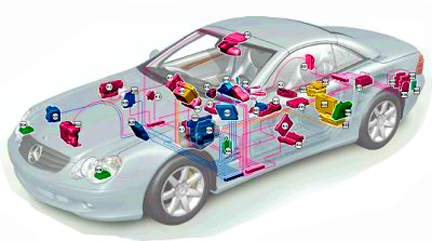U.S. Considers Vehicle Electronics Rules
The National Highway Traffic Safety Administration said on October 6 it is considering imposing vehicle electronic requirements and asked major automakers to consider if voluntary standards for vehicle electronics make sense. NHTSA said in a notice it was updating automakers on its "progress on examining the need for safety standards" for passenger cars — something Congress required it to do in a 2012 law. The law requires NHTSA must report to Congress on the highest priority areas for safety for electronic systems.
The safety agency has come under criticism for failing to connect the problem of General Motors vehicles ignition vehicles that are now linked to at least 23 deaths and 54 crashes. NHTSA didn’t know that GM’s computer controls deactivated the airbags if the ignition switch was in the "off" or "accessory" mode.
Even though vehicles have a growing amount of electronics, they largely aren’t governed by any performance rules. NHTSA’s rules focus on performance of the car rather than electronic systems. NHTSA’s research is currently focused on electronic steering, acceleration, and braking.
NHTSA noted the number of vehicle recall campaigns has increased significantly in the past twenty years, nearly tripling from 1993, when it was 222, to 654 last year.
The first general use of automotive electronics dates back to 1970s, NHTSA said. By 2009, a typical automobile featured more than 100 microprocessors, 50 electronic control units, five miles of wiring and 100 million lines of code, the agency said. Automakers have issued dozens of recalls this year for electronic issues, many to update software to address a litany of problems.
The agency is researching new potential electronic related rules.
NHTSA requires all vehicles to have an anti-rollover technology called electronic stability control but hasn’t moved forward with most other electronic related rules.

